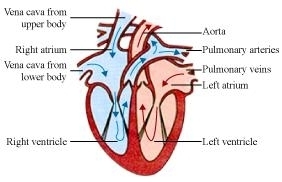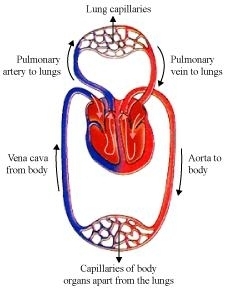NCERT Solution: Life Processes
The breakdown of pyruvate to give carbon dioxide, water and energy takes place in
(a) cytoplasm.
(b) mitochondria.
(c) chloroplast.
(d) nucleus.
Ans: (b) mitochondria.
Fats are present in the form of large globules in the small intestine. The small intestine receives the secretions from the liver and the pancreas. The bile salts (from the liver) break down the large fat globules into smaller globules so that the pancreatic enzyme lipase can easily act on them. This is referred to as emulsification of fats. This process takes place in the small intestine.
The role of saliva in the digestion of food:
→ It moistens the food for easy swallowing.
→ It contains a digestive enzyme called salivary amylase, which breaks down starch into sugar.
Autotrophic nutrition takes place through the process of photosynthesis. Carbon dioxide, water, chlorophyll pigment, and sunlight are the necessary conditions required for autotrophic nutrition. Carbohydrates (food) and O2 are the by-products of photosynthesis.
| Aerobic respiration | Anaerobic respiration |
| It occurs in the presence of O2. | It occurs in the absence of O2. |
| It involves the exchange of gases between the organism and the outside environment. | Exchange of gases is absent. |
| It occurs in cytoplasm and mitochondria. | It occurs only in cytoplasm. |
| It always releases CO2 and H2O. | End products vary. |
Anaerobic respiration occurs in the roots of some waterlogged plants, some parasitic worms, animal muscles, and some micro-organisms such as yeasts.
Alveoli provide a surface for the exchange of gases. An extensive network of blood vessels is present in the wall of the alveoli. By lifting our ribs and flatten the diaphragm, the chest cavity becomes spacious. Air is sucked into the lungs and alveoli. The oxygen from the breath, diffuses into the blood and CO2 from the blood brought from the body, diffuses out into the air.
Haemoglobin is the respiratory pigment that transports oxygen to the body cells for cellular respiration. Therefore, deficiency of haemoglobin in blood can affect the oxygen supplying capacity of blood. This can lead to deficiency of oxygen in the body cells. It can also lead to a disease called anaemia
Flow of blood in the heart:
The heart has superior and inferior vena cava, which carries de-oxygenated blood from the upper and lower regions of the body respectively and supplies this de-oxygenated blood to the right atrium of the heart

Flow of blood in the human heart
The right atrium then contracts and passes the de-oxygenated blood to the right
ventricle, through an auriculo-ventricular aperture.
Then the right ventricle contracts and passes the de-oxygenated blood into the
two pulmonary arteries, which pumps it to the lungs where the blood becomes
oxygenated. From the lungs, the pulmonary veins transport the oxygenated blood
to the left atrium of the heart.
Then the left atrium contracts and through the auriculo-ventricular aperture,
the oxygenated blood enters the left ventricle.
The blood passes to aorta from the left ventricle. The aorta gives rise to many
arteries that distribute the oxygenated blood to all the regions of the body.

Schematic diagram of blood circulation in humans
Therefore, the blood goes twice through the heart. This is known as double circulation.
Importance of double circulation:
The separation of oxygenated and de-oxygenated blood allows a more efficient supply of oxygen to the body cells. This efficient system of oxygen supply is very useful in warm-blooded animals such as human beings.
As we know, warm-blooded animals have to maintain a constant body temperature by cooling themselves when they are in a hotter environment and by warming their bodies when they are in a cooler environment. Hence, they require more O2for more respiration so that they can produce more energy to maintain their body temperature. Thus, the circulatory system of humans is more efficient because of the double circulatory heart.